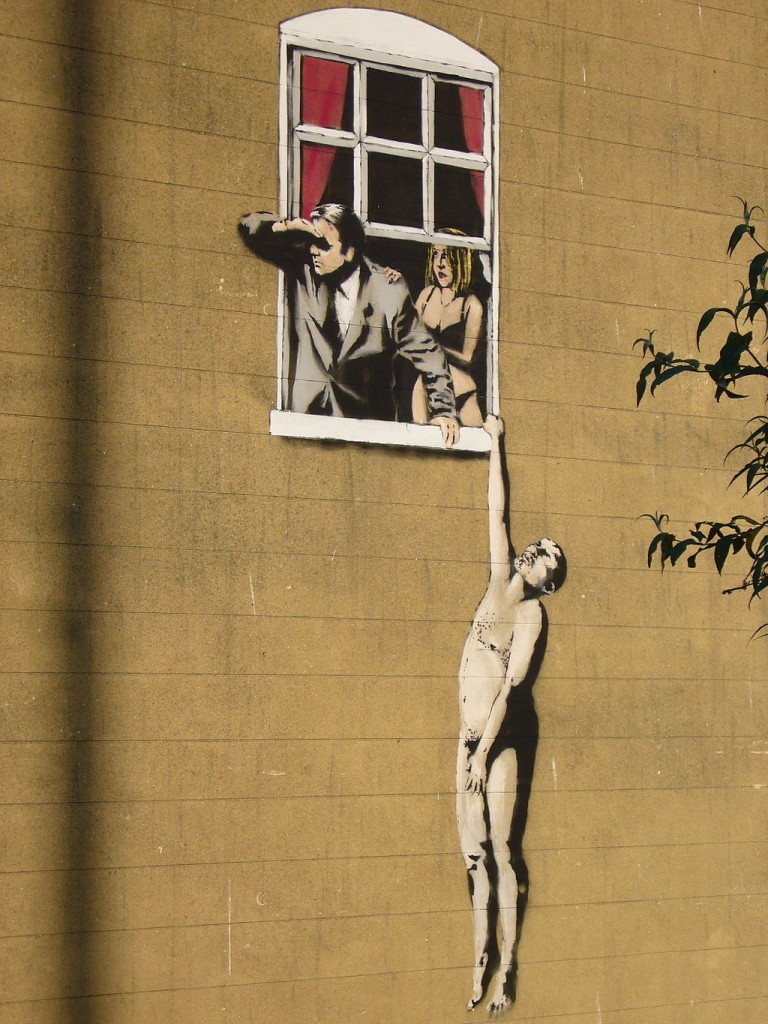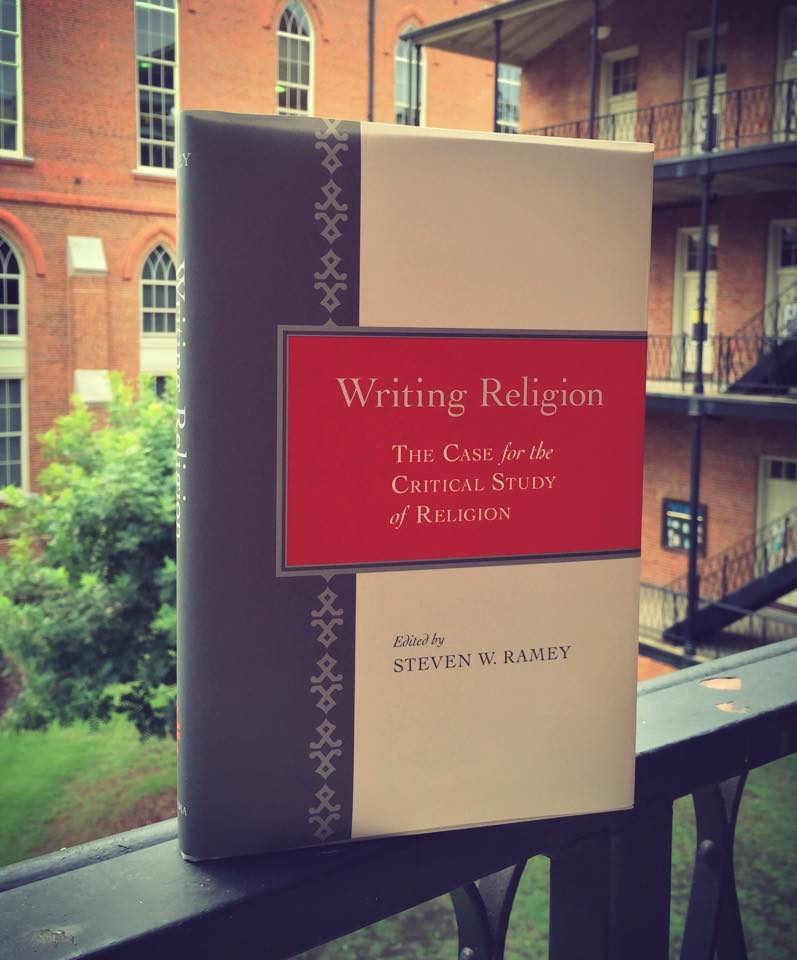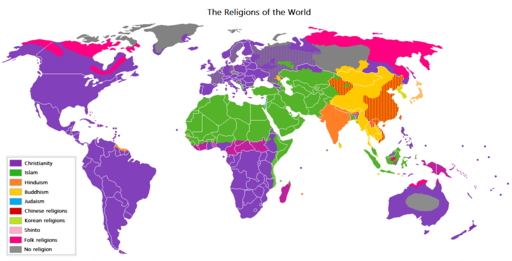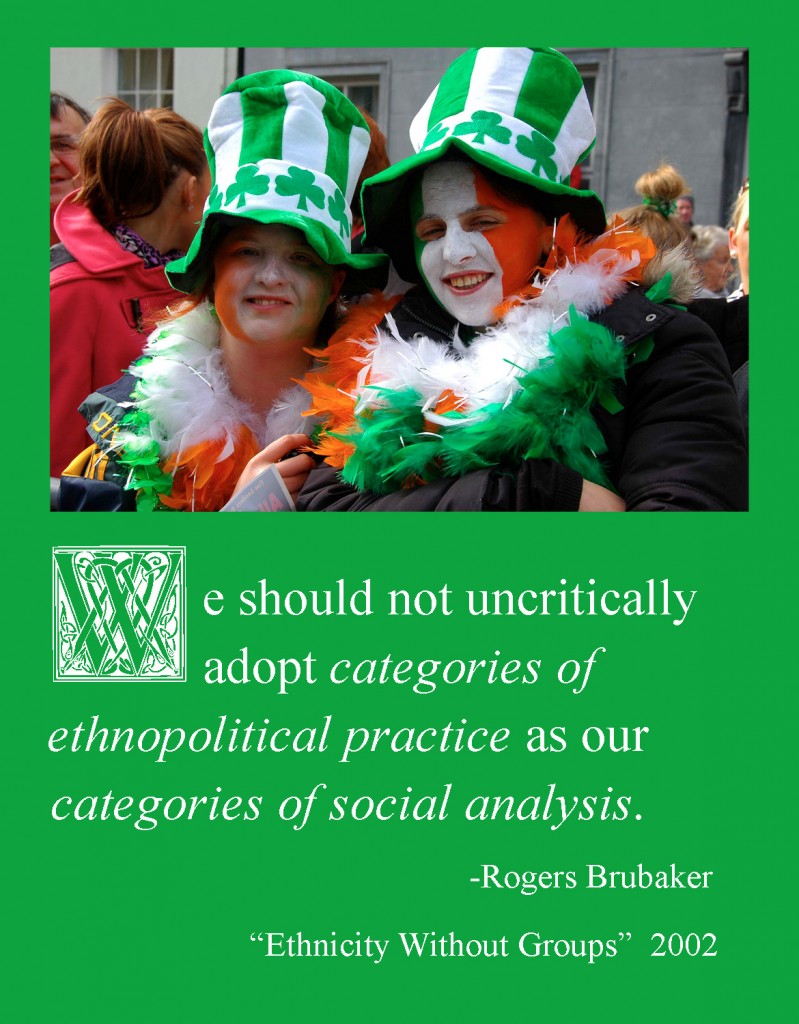 “World religions” as a way of organizing the world have become the focus of scholarly critiques (including my recent post) that connect this discourse to the interests and assumptions of European Christians. In the midst of such critiques, some minority/marginalized groups also have adopted the concept of world religions because it can be useful to them. As a case in point, Rajan Zed,who self-identifies as a “Hindu statesman” and the president of the Universal Society of Hinduism, issued a press release earlier this week over the release of information on the cheating website Ashley Madison and subsequent headlines that 1 in 5 in Ottawa are enrolled. Continue reading “Using World Religions”
“World religions” as a way of organizing the world have become the focus of scholarly critiques (including my recent post) that connect this discourse to the interests and assumptions of European Christians. In the midst of such critiques, some minority/marginalized groups also have adopted the concept of world religions because it can be useful to them. As a case in point, Rajan Zed,who self-identifies as a “Hindu statesman” and the president of the Universal Society of Hinduism, issued a press release earlier this week over the release of information on the cheating website Ashley Madison and subsequent headlines that 1 in 5 in Ottawa are enrolled. Continue reading “Using World Religions”
Freedom Fighter or Prophet
 “Look! . . . Up in the sky. . . . It’s a bird. . . . It’s a plane. . . . No, it’s Superman!” When someone points out something in the distance, like an object flying through the sky, it can be hard to recognize just what it is. We attempt to name it, place it in a clear category, but sometimes our categories don’t fit, especially when working with complex societies, and the category that we attempt to force it into often influences what we actually see.
“Look! . . . Up in the sky. . . . It’s a bird. . . . It’s a plane. . . . No, it’s Superman!” When someone points out something in the distance, like an object flying through the sky, it can be hard to recognize just what it is. We attempt to name it, place it in a clear category, but sometimes our categories don’t fit, especially when working with complex societies, and the category that we attempt to force it into often influences what we actually see.
Arkotong Longkumer, in Reform, Identity and Narrative of Belonging (a 2010 book on the Heraka movement in northeast India), analyzes an intriguing community and movement that engaged politics, economics, social change, ritual shifts, and ethnicity, to name a few areas of interest. The context of the movement was the increasing imposition of British rule in the region in the early twentieth century, including the British encouragement of immigration to the area that disrupted the traditional migration cycle and the agricultural system that required it. The simultaneous opportunity for education and government jobs combined with the necessity of alternative forms of labor in the wake of declining agricultural production. All of this required a revision in ritual practices and social restrictions to reduce the expense of animal sacrifices and the limitations on mobility and individual independence from the community, as they adapted to the changing environment. The contexts also fostered interest in uniting different groups politically in opposition to, at times, the British and other communities. In fact, the image above of one of the leaders is entitled “Indian Freedom Fighter”. Continue reading “Freedom Fighter or Prophet”
Identifying Threats of Violence
 With discourses surrounding terrorism and gun violence, which have become prominent again in the wake of Charleston and Chattanooga, people want to find patterns that illustrate the source of the threats of violence. Looking for these patterns, people engage in an act of comparison, which, as we have discussed on this blog previously, is more about the person constructing the comparison than some reality outside of him/her. For example, I have seen various social media posts recently that include lists of acts of violence, ranging from 9/11 and the storming of the US Embassy in Iran to the Chattanooga shootings, all attributed to people who identified as Muslims. While these posts appear to be direct descriptions of reality, they reflect the choices of the creator of the list as to which acts of violence to include and which identifications to include. Continue reading “Identifying Threats of Violence”
With discourses surrounding terrorism and gun violence, which have become prominent again in the wake of Charleston and Chattanooga, people want to find patterns that illustrate the source of the threats of violence. Looking for these patterns, people engage in an act of comparison, which, as we have discussed on this blog previously, is more about the person constructing the comparison than some reality outside of him/her. For example, I have seen various social media posts recently that include lists of acts of violence, ranging from 9/11 and the storming of the US Embassy in Iran to the Chattanooga shootings, all attributed to people who identified as Muslims. While these posts appear to be direct descriptions of reality, they reflect the choices of the creator of the list as to which acts of violence to include and which identifications to include. Continue reading “Identifying Threats of Violence”
Making the Case for the Critical Study of Religion
 Steven Ramey, one of the collaborators on Culture on the Edge, has published an edited volume with the University of Alabama Press that features contributions from a number of scholars whose work has influenced members of Culture on the Edge. With his Introduction and an Afterword from Russell McCutcheon, the volume as a whole demonstrates the potential of the critical study of religion for both relevant research and the development of a thriving academic department.
Steven Ramey, one of the collaborators on Culture on the Edge, has published an edited volume with the University of Alabama Press that features contributions from a number of scholars whose work has influenced members of Culture on the Edge. With his Introduction and an Afterword from Russell McCutcheon, the volume as a whole demonstrates the potential of the critical study of religion for both relevant research and the development of a thriving academic department.
The volume has ten main chapters, written by each of the Aronov Lecturers over the first ten years of that series at the Department of Religious Studies at the University of Alabama, where several of us teach. The Aronov Lecture each year features an internationally recognized scholar, selected by the Religious Studies faculty, whose work is considered widely relevant to the work in the field and related disciplines. Some of the figures included in the volume whose work has been especially helpful for the Culture on the Edge collaboration are Tomoko Masuzawa, Aaron Hughes, Bruce Lincoln, and Jonathan Z. Smith. The ten central chapters are the following.
God Save This Honorable Court: Religion and Civic Discourse
Jonathan Z. Smith
An Early Moment in the Discourse of “Terrorism:” Reflections on a Tale from Marco Polo
Bruce Lincoln
“A Storm on the Horizon”: Discomforting Democracy and the Feeling of Fairness
Ann Pellegrini
Fear of Small Numbers
Arjun Appadurai
Developing a Critical Consciousness: A Feminist Approach to Religion
Judith Plaskow
Religious Practices and Communal Identity of Cochin Jews: Models, Metaphors, and Methods of Diasporic Religious Acculturation
Nathan Katz
Regarding Origin: Beginnings, Foundations, and the Bicameral Formation of the Study of Religion
Tomoko Masuzawa
De-Judaizing Jesus: Theological Need and Exegetical Execution
Amy-Jill Levine
How to Theorize with a Hammer, or, On the Destruction and Reconstruction of Islamic Studies
Aaron Hughes
“Can I Share a Personal Example?” Self-Disclosure, Religious Studies Pedagogy, and the Skeptical Mission of the Public University
Martin Jaffee
The Harm of World Religions
 While discussions of “World Religions” often attempt to encourage appreciation of human diversity, these presentations have become the focus of scholarly critiques because of the harm that they cause. Such presentations appear to provide a clear way of describing the world (as illustrated in the map above), but the assumptions behind them often serve to promote European dominance that people present as simple descriptions. A recent animated presentation on Business Insider illustrating the spread of the five major world religions becomes the object of a range of critiques. Continue reading “The Harm of World Religions”
While discussions of “World Religions” often attempt to encourage appreciation of human diversity, these presentations have become the focus of scholarly critiques because of the harm that they cause. Such presentations appear to provide a clear way of describing the world (as illustrated in the map above), but the assumptions behind them often serve to promote European dominance that people present as simple descriptions. A recent animated presentation on Business Insider illustrating the spread of the five major world religions becomes the object of a range of critiques. Continue reading “The Harm of World Religions”
On Social Analysis
Strategic Ideologies
Prompted by the discussion surrounding Rachel Dolezal’s NAACP resignation, this series of posts is about how and when we take performativity seriously…, and when it bows to interests in historical or experiential specificity.
Race, as many have pointed out for years, is not biological. This point raises questions about the basis on which it is determined. Is it ancestry, appearance, cultural practice, or something else? That complicated question has come to greater prominence in light of the media circus around Rachel Dolezal and her assertion of an African-American identification. While discussions of Dolezal often focus on the process of self-identification and strategic choices made in relation to that self-identification, I want to focus, instead, on the strategic nature of the act of ascribing identification to someone else. Continue reading “Strategic Ideologies”
Symbols and the Confederate Flag
 I am not a fan of the Confederate Flag. While I have spent all but two of the past 28 years in states that joined the Confederacy, I grew up in a Border State with parents from another Border State, making me an outsider to many who see the flag as an important symbol of their Southern heritage. Despite all of this, I found myself bothered by the argument in last week’s Atlantic article by Ta-Nehisi Coates calling for the immediate removal of the Confederate Flag from the grounds of the South Carolina Capitol. Coates asserts that, since the shooter had apparent links to white supremacist ideology and the Confederate flag, these murders become the occasion finally to remove the flag from the Capitol grounds. Continue reading “Symbols and the Confederate Flag”
I am not a fan of the Confederate Flag. While I have spent all but two of the past 28 years in states that joined the Confederacy, I grew up in a Border State with parents from another Border State, making me an outsider to many who see the flag as an important symbol of their Southern heritage. Despite all of this, I found myself bothered by the argument in last week’s Atlantic article by Ta-Nehisi Coates calling for the immediate removal of the Confederate Flag from the grounds of the South Carolina Capitol. Coates asserts that, since the shooter had apparent links to white supremacist ideology and the Confederate flag, these murders become the occasion finally to remove the flag from the Capitol grounds. Continue reading “Symbols and the Confederate Flag”
Do Your Holiday Celebrations Match Up?
 How do you celebrate your holidays? The Wikipedia entry for Memorial Day begins with the following description.
How do you celebrate your holidays? The Wikipedia entry for Memorial Day begins with the following description.
Memorial Day is a federal holiday in the United States for remembering the people who died while serving in the country’s armed forces… It typically marks the start of the summer vacation season, while Labor Day marks its end.
Many people visit cemeteries and memorials, particularly to honor those who have died in military service. Many volunteers place an American flag on each grave in national cemeteries.
Social Media Is Out of (Your) Control, So Is Life

Liking a post and favoriting a tweet serve as excellent examples of the complexity of life that is out of our control in ways that we often don’t realize. The meaning of liking, favoriting, etc., clearly shifts depending on the context. Sometimes clicking the star or thumbs up literally means that I like something; sometimes I want to say that I hear you, acknowledging someone’s comment or post. This varied meaning is true throughout language. Words and symbols have a range of meanings that also can shift radically over time and place (a computer used to mean “one who computes;” a Swastika is a positive symbol in multiple cultures today). That simple click (like other forms of communication) has other complexities, too, that illustrate the lack of control that any of us have.
Continue reading “Social Media Is Out of (Your) Control, So Is Life”

